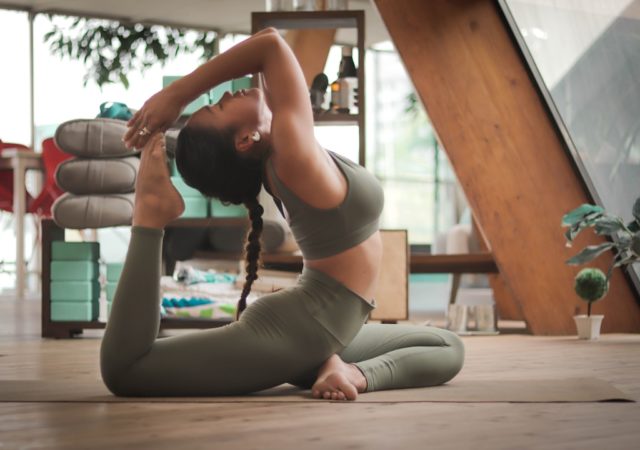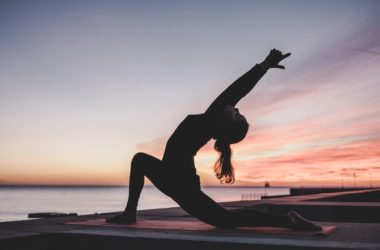Introduction:
Yoga and Pilates are two of the most popular mind-body practices in the world. They both focus on linking breath with movement, building strength, and improving flexibility while also helping students to connect with their bodies and minds. Both practices have a rich history, and while they share some similarities, they have distinct differences. This article explores the differences and benefits of yoga vs. Pilates, and helps readers to understand which discipline may be right for them.
Roots and origins:
Yoga has been around for centuries and has deep roots in Indian philosophy and culture. It is made up of a combination of physical postures, breathing exercises, and meditation. Yoga classes can vary greatly, from gentle, restorative classes to more vigorous practices like vinyasa flow and power yoga.
Pilates, on the other hand, was developed by Joseph Pilates in the early 20th century. Pilates is designed to strengthen the body’s core, increase flexibility, and improve posture. Pilates exercises are typically done on a mat or with specialized equipment.
Focus:
Yoga practice focuses on mindfulness, spirituality, and achieving greater self-awareness. It is about connecting the mind, body, and spirit. In contrast, Pilates practice is geared towards building core strength, improving muscle tone, and correcting poor posture. While both practices may include some meditation, yoga places a greater emphasis on breathing techniques and mindfulness than Pilates.
Breathing techniques:
Breathing techniques are an essential part of both yoga and Pilates practices. They help to calm the mind, increase focus, and oxygenate the body. Yoga breathing techniques, known as pranayama, involve various techniques aimed at balancing and controlling the breath. Pilates breathing is a lateral thoracic breathing style, which emphasizes the expansion of the rib cage.
Movements and poses:
While there is some overlap between the poses in yoga and Pilates, the movements and poses in each practice are generally quite different. Yoga poses are often named after animals, nature, and Hindu gods. Poses are held for varying amounts of time and are often linked together in a sequence called a flow. Conversely, Pilates movements involve exercises that target specific body parts to improve core strength, functionality, and mobility. Pilates exercises include using specialized equipment such as the Pilates Reformer and Cadillac, as well as more traditional mat work.
Benefits of Pilates:
Pilates offers numerous benefits, both physically and mentally. One of the primary physical benefits of Pilates is improved core strength. Regular Pilates practice can help to improve posture, alleviate lower back pain, and prevent injuries. Pilates can also increase flexibility, which can help you to move more efficiently and avoid injury. On the mental side, Pilates practice improves the mind-body connection, which can lead to a greater sense of calm and well-being.
Benefits of Yoga:
Yoga offers a range of benefits, both for the body and the mind. One of the primary physical benefits of yoga is increased flexibility. Greater flexibility can help reduce the risk of injury while making it easier to perform daily tasks. Yoga also strengthens muscles, particularly the muscles of the core, while boosting immunity. Yoga can help reduce stress and anxiety, making it an excellent choice for individuals who need to find greater relaxation in their lives. Furthermore, yoga can improve memory, increase self-awareness, and promotes feelings of relaxation and peace.
Similarities:
While yoga and Pilates are different practices, they do share some similarities. One similarity is their focus on the breath and mindful movement. Both practices also offer a range of physical and mental benefits and are low-impact forms of exercise. Additionally, the importance of mindfulness and self-awareness is woven throughout each practice.
Level of difficulty:
Both yoga and Pilates offer a range of difficulty levels, making them accessible to people of all ages and fitness levels. Yoga classes are often graded from beginner to advanced, with different modifications available for each pose, while Pilates classes operate similarly. Additionally, beginners have the option of starting with mat work and gradually progressing to more advanced equipment-based classes.
Which one is right for you?
When deciding which practice to pursue, consider your physical condition, mental state, and fitness goals. Individuals with back pain or lower body injuries may find Pilates particularly beneficial. For individuals looking for a stress-reducing activity that enhances flexibility, yoga may be a better choice. Furthermore, the fitness goal is critical when deciding between the two practices. Individuals whose goal is to increase core strength and improve posture often benefit from Pilates more than yoga.
Conclusion:
Yoga and Pilates are two amazing practices that offer numerous benefits. While they differ in various ways, the benefits of both practices can contribute significantly to our physical, emotional, and psychological growth. The unique focus of each practice makes them an excellent choice for individuals who are looking to build strength, flexibility, and mindfulness. As our aim is to optimize our health, I encourage readers to give each practice a try and see which one resonates with them.





